Blackjack Casino Edge – 21 Things You Should Know

- The blackjack house edge could range anywhere from 0.5% to 4%, depending on your strategy.
- Blackjack’s house edge is lower than most games, which is why it’s an incredibly popular option.
- There are several factors that go into the house edge, such as which casino you’re playing at.
Experienced casino players know the blackjack house edge is up there with the best of them.
With a lower house edge than many other popular games, it should be no surprise to see this old classic rated so highly across the board. Everyone would like to hit up the best online casinos and always come away with a profit. But you can’t win all the time, right?
So, let’s look at things from a slightly different perspective. Instead of trying to win every hand, why not look to avoid ending your session with a loss. By understanding the house advantage blackjack players like us work against, we are better equipped to do just that.
In this piece, I’ll cover some of the most important things you should know about the house advantage in blackjack.
I’ll also be passing on a few crucial tips that should make you feel a little more knowledgeable about the game by the time we’re done. Let’s get to it.
The Blackjack House Edge Is More Than a Number
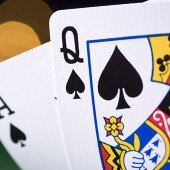
What is the house advantage in blackjack? Can you tell me off the top of your head? There is more than one answer, right?
After all, the house edge for blackjack when using perfect strategy is different than it is when playing another way.
It could also be different depending on the casino you play at. Depending on the title, you could potentially be faced with a plethora of varying percentages. In some cases, we’re taking anything from 0.5% to 4%.
Knowledge of the house edge in this game is always good to have, but it’s no rule book.
In other words, if you’re wagering $100 per bet, you’re expected to lose $5 for every bet you place.
Sounds simple, doesn’t it? In gambling math terms, it’s certainly not opaque. But there is more to this sum than meets the eye. For example, if you’re playing a game where you’re making 60 bets per hour and losing $5 per bet, you’re losing $300 per hour.
On the other hand, if you’re playing the same game but with a house edge of 1%, you’re only losing $60 per hour. Now, isn’t that a big difference?
It’s important to emphasize that there is much more to winning or losing than sticking with blackjack. Pun intended.
Knowledge is power, but so is giving yourself the best chance of winning at blackjack. In addition to finding the best variants, you’ll have to use the best blackjack online casinos.
The House Edge Only Applies Over a High Bet Sample
As with any mathematical calculation, you need a sufficient sample size to arrive at a logical conclusion.
Therefore, the house edge doesn’t apply to a statistically small clutch of bets. We need an adequate sample size to determine what a house edge is. And blackjack is no different.
Let’s examine a simple example to amplify what I am saying here.
You’re playing in a blackjack game with a 1% house edge and place a $100 bet on one hand. Ergo, you have several potential outcomes to determine how that bet goes.
These are the following:
- $100 Win
- $100 Loss
- $150 Win on a Natural
- A Push
- Additional $200 Win if You Double Down or Split
It won’t make sense if we apply the same mathematical expectation here as we would to anyone betting on blackjack with one dollar per hand.
Why? Well, winning a dollar from a single $100 wager is impossible. You could potentially lose an average of $1 per hand playing $100 bets, but this would take a phenomenal number of wagers.
So, to reiterate, you could play one hand and win $100.You could play ten hands and have a net loss of $400, which is an average loss per hand of $40. You could play one hundred hands and have a net loss of $500, which is an average loss per hand of $5.
But once you get over 1000 hands, the actual results will start resembling the mathematical expectation. At 10,000 hands, you will be even more likely to see something statistically similar to the mathematical expectation.
At 100,000 hands, you’re almost certainly getting closer to the expectation. At 1 million hands, the chances of getting results different from the expectation are almost non-existent.
Ain’t nobody got time for that.
Blackjack House Edge Is Lower Than Most Games

The house edge for most casino games is much higher than it is for blackjack. That begs the question of why casinos still offer the game of blackjack.
After all, it’s less profitable than stacking up on games like the Caribbean Hold’em or Casino War.
Some gambling writers refer to games like Casino War as “carnival games.” How bad does your house edge have to be to qualify as a carnival game?
As it turns out, the house edge in Casino War is a whopping 2.88%. Now, that doesn’t sound like much. It’s certainly not up there with throwing rings over gas bottles.
And I’d take 2.88% over the risks taken when eating one of those questionable hotdogs by the bumper cars.
If the house edge on blackjack is 0.5%, you’re looking at an average loss of 50 cents every time you bet $100. On the other hand, with Casino War, you’re looking at an average loss of $2.88 every time you bet $100.
That doesn’t sound like a huge difference, really. After all, you can’t even buy a carnival hotdog for $2.88 these days. And forget about bringing that kind of a bankroll to the Caribbean Stud tables!
As the best Caribbean Stud poker tips might tell you, a high bankroll is almost necessary.
The problem is that no one plays a single hand of blackjack or a single hand of Casino War. Most people play for an hour or two. This means you’re more likely to play 60 or even 120 hands.
Now, at 50 cents per hand, you might lose three to six bucks in that scenario. At $2.88 per hand, you’re looking at a loss of almost $180 on the low end and maybe even $360 on the high end. And that’s only based upon a couple of hours of play.
Suddenly, that buddy of yours that told you blackjack was for wimps isn’t looking so smart now, is he?
I’d recommend taking him to the carnival and buying him a good old diesel dog…
Blackjack House Edge Is 0.5% with Basic Strategy
You must be happy with that number? Of course, that 0.5% can go up or down based on your skill level.
Most players are bad enough when basic blackjack strategy gives up another 1.5% or so to the house. This can increase the house edge for the casino by 2%.
In fact, this is one of the answers to the question I asked above—why does the casino offer blackjack if the house edge is so low? Well, the multi-layered answer is actually relatively simple.
First, it’s a profitable game that is extremely popular and widely available.
Do you think any casino not offering blackjack sends a strong message of confidence? Of course not.
You’d probably expect to be walking into one of many potential online casino scams based on that alone.
You see, the basic strategy is just a fancy word for the ability to make the correct mathematical decision in every situation at a blackjack table.
In poker, you must know when to fold‘em and when to hold’em. You must know when to hit, stand, split, and double down in blackjack. The correct decision is always based on what cards you’re holding compared to the dealer’s face-up card.
A lot of times, common sense can inform your play.
It’s the borderline situations, like whether you should hit that hard 15, which makes the difference in basic blackjack strategy. Read up on blackjack strategy and improve your chances of winning!
No Blackjack Strategy Means a Higher House Edge
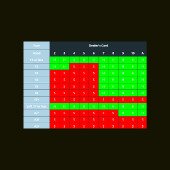
When using blackjack basic strategy, the house edge could be closer to 2%, but it could get even worse. You could theoretically hit until you bust on every hand.
The house edge for a dysfunctional player would be 100%. No one plays like that, of course, but it’s a simple example of how that kind of difference in house edge is possible.
Many players make basic strategy decisions by mimicking the dealer’s strategy. This is one of the worst ideas you can enter a casino with.
Other players always assume that the dealer has a 10 in the hole. This is closer to the correct blackjack basic strategy house edge, but it’s far from foolproof. It’s a recipe for disaster in some situations.
The bottom line is simple, though. In order to keep the house edge as low as possible, you have to use blackjack perfect strategy.
Basic strategy will help lower the house edge, but the goal is to have it as low as possible.
That’s as long as you actually like to win and aren’t some kind of masochist that gets a jolly out of losing your dough.
You Can Calculate Your Predicted Hourly Loss
You can also calculate the blackjack house edge with basic strategy, which you can use to determine your predicted hourly loss.
We touched on this a little in an earlier example, but here’s a detailed explanation of calculating your average hourly loss playing blackjack.
- You take the net amount you’ve won or lost and divide it by the number of hours you played.
- For example, if you played for two hours and lost $200, you lost $100 per hour.
That’s how you calculate your actual hourly loss rate. But you can also calculate your predicted hourly loss rate.
You probably won’t see your numbers starting to mirror this until you’ve hit 10,000 hands or so, but it’s still worth knowing.
The formula for expected hourly loss looks like this: Average bet size X bets per hour X house edge = hourly expected loss.
Here’s an example.
- I’m betting $100 at a table where I’m getting 60 hands per hour. I’m a perfect basic strategy player, and the game is good, so the house edge is only 0.5%.
- My expected hourly loss is $100 X 60 X 0.5%, or $6000 X 0.5%, or $30/hour.
Compare that with my friend Steve, who doesn’t use the blackjack basic strategy in house edge. The house edge is 2% against him, so his expected hourly loss is $120/hour.
You can make this calculation for any casino game, by the way – not just blackjack!
Counting Cards Can Give an Edge Over the House
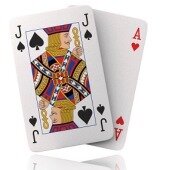
If you learn to count cards (or master some other advantage gambling technique in blackjack), you can gain an edge over the house.
What is this wizardry, you ask? It has nothing to do with magic. Once you’ve mastered the basic strategy, you can move on to counting cards.
When someone counts cards, they keep a relative count of how many high cards versus low cards are left in the deck. When many high cards are left in the deck, they raise their bet.
Here’s the how and why of it.
- High cards are tens and aces. You need these cards to get a blackjack, which pays off at 3 to 2. If you’re more likely to get a blackjack, the expected value of your bet goes up.
- Low cards make it harder to get a blackjack. They also increase your odds of going bust.
- If you bet more when there are lots of high cards in the deck and bet less when there aren’t, you can flip the odds from being in the house’s favor to yours.
- In fact, if you use a simple count like the Hi-Lo System and range your bets between 1 and 3 units, you’ll have a 1% edge over the house.
- You can also use that information to determine an average expected hourly WIN rate. It’s the same math; you’re winning instead of losing now.
- With an average of $100 per hand and a 1% edge over the house, you’re looking at winning an average of $60 per hour.
- But even if you count cards and use the house edge blackjack perfect strategy, these results don’t come into play until the long term.
- You can’t count on being ahead until you start closing in on 10,000 hands.
Card counters can even go broke if they don’t have a large enough bankroll to account for statistical deviation.
The House Edge Can Vary Conditionally
The house edge can vary based on game conditions. Game rules for blackjack vary dramatically from casino to casino and from table to table within a casino.
For example, you might be playing in a game dealt from a single deck. The table next to you might be using eight decks. The house edge differs based on this game condition.
Other game conditions and rules variations include whether or not the dealer hits a soft 17, whether or not you can double after splitting, and how much you get paid when you hit a “natural” (a 2-card hand that totals 21). Skill? Luck?
The following few items on the list look at the effect on the house edge of some of the more common rules and conditions variations you might run into. So, keep reading!
More Decks of Cards Means a Higher House Edge
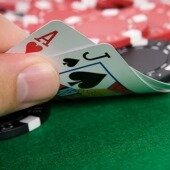
The house edge in blackjack goes up when the casino uses more decks of cards.
This rule variation might seem puzzling at first. Why would the house edge go up just because more decks are in use?
You still have a similar ratio of high cards to low cards. In fact, before any of the cards are dealt with, the ratio is exactly the same.
The answer lies in the likelihood of getting a blackjack.
Let’s assume you’re playing in a single-deck blackjack game. You get an ace as your first card. There are 51 cards left in the deck, and 16 of them have a value of 10. The probability of getting a blackjack (which pays off at 3 to 2) is 16/51, or 31.37%.
Let’s look at the same situation with eight decks in play.
You’re dealt an ace. You now have 415 cards left in the shoe, and 128 of them are worth 10. The probability of getting a blackjack is 128/415, or 30.84%.
So, your chances of getting a blackjack are lower with more decks in play. Fewer blackjacks mean a bigger house edge.
The actual difference in house edge between a game with eight decks and a game with one deck is about 0.25%. That might not appear to be significant. But over the long run? It most certainly is.
A Dealer Soft 17 Can Affect Blackjack House Edge
That’s right – a dealer hitting a soft 17 can also alter the house edge.
Everyone knows that in any blackjack game, the dealer has to hit a total of 16 or less. And it’s always a treat to see a dealer go bust, especially when you didn’t go bust first.
But in some casinos, a dealer stands on a soft 17. In others, the dealer hits a soft 17. A “soft” 17 is a hand with an ace, which can count as 11 or 1.
You don’t have to guess what the rule is, either. All blackjack tables at all casinos have one of two things about this written and posted at the table:
- Dealer Must Stand on all 17’s
- Dealer Hits Soft 17
You might think that if a dealer hits a soft 17, they are more likely to bust and you’re right. That’s precisely what it means.
But that doesn’t mean the rule is good for the player. On the occasions when the dealer does NOT bust, her hand will improve dramatically. In fact, this will happen often enough that a blackjack table where the dealer hits a soft 17 has a 0.2%
Want to learn more about the soft 17 rule in blackjack? Check out the following post.
Improve House Edge by Doubling After a Split
If you can double after splitting, the house edge improves.
Most people realize that being able to double down is good for the player. After all, it allows you to put more money into action when you think you’re in a good situation.
Being able to double down after splitting gives you additional opportunities to put more money into play when you like your odds. You’re trying to make money playing blackjack, but not all hands are winners.
Not all casinos allow you to double down after splitting. If you are allowed to double after splitting, you can subtract about 0.15% from the house edge.
Now, if you saw a live dealer blackjack casino refuse you from doing this, would you believe the game was rigged? Of course, not. But these are the rules, depending on where you play. And sometimes, they don’t make sense to the amateur player.
But that doesn’t mean online blackjack is rigged, of course!
It’s Advantageous to Have Flexibility When Doubling Down
The more flexibility you have doubling down, the lower the house edge becomes.
At some casinos, you can only double down on the first two cards if you have a total of 10 or 11. Other casinos also allow you to double down on a 9, too. And in some casinos, you can double down on any total.
In this case, doubling down on any two cards takes almost 0.2% away from the house edge when compared to only being able to double down on a 10 or 11.
Keep this in mind. You have to master basic strategy for this to matter! The blackjack house edge isn’t just going to shift because you want it to.
That applies to classic, bonus, or double attack variants.
Lower the House Edge by Splitting with More Options
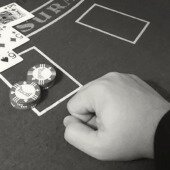
The more flexibility you have when splitting, the lower the house edge!
As usual, the more options you have, the better off you are. Splitting pairs is obviously an attractive option for players because you can again get more money into action when you like your situation.
For example, if you can split aces, you get two hands, both of which have an almost 1/3 chance of turning into a blackjack.
Many casinos only allow you to split once. But in some casinos, you can re-split if you get a pair on your newly-split hand.
This has a smaller effect on the house edge than most of the stuff on this list because it just comes up less often. If you can split up to 4 hands, you get another 0.05%.
Nice!
Surrender Rules Affect the House Edge
This is one to look out for! Most players ignore the option to surrender. This is a mistake because it costs money in the long run.
In some situations, surrendering is the correct play. Casinos have “early surrender” and “late surrender.” Then again, some don’t offer surrender as an option at all.
Here’s what you need to know.
- In a casino that offers early surrender, you can forfeit half your bet if the dealer has an ace and you don’t like your hand. It’s called “early” surrender because you can make this decision before the dealer checks for blackjack.
- In a casino that offers late surrender, you have the same option.
But the dealer checks for blackjack first.
One is clearly better than the other, wouldn’t you say? Again, keep this in mind before you play real money blackjack at any casino.
A Natural Can Also Alter the House Edge
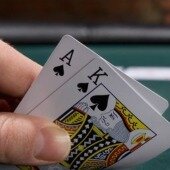
The payout for a natural, which we call blackjack, significantly affects the house edge. The traditional payoff for a natural is 3 to 2. That means if you bet $100 and get a blackjack, you win $150.
But in recent years, casinos have started offering games where blackjack only pays off at 6 to 5. And since many Americans are bad with fractions, they don’t even realize this is a worse deal.
Because 6 is better than 3 and 5 is bigger than 2, they think they’re getting a better deal. Not to knock anyone here, but can anyone remember when McDonald’s brought out a third of a pound burger to better the quarter pounder? Any guesses on why the 1/3 pound burger flopped?
But that doesn’t mean smart players don’t get complacent and fail to check the payout tables.
So, when you get a blackjack with a $100 bet at a 6 to 5 table, your payoff is only $120, not $150. Had you checked, you probably would have rejected that game.
This effect on the house edge is so dramatic that it can’t be overstated. It adds a huge 1.5% to the casino’s advantage. This makes blackjack a game comparable to Casino War, but it’s harder because you still have to follow basic strategy.
Just say no to 6/5 blackjack!
Casinos That Charge an Ante Raise the House Edge
Suppose a casino charges an ante and the house edge skyrockets. It’s that simple.
In some Oklahoma casinos, you can play blackjack, but you have to pay an ante. This portion of the bet goes to the house, period.
The most common ante in Oklahoma blackjack is 50 cents on a $5 bet.
You don’t get the 50 cents back whether you win or lose. This takes 10% off the top immediately. That makes blackjack with an ante as bad as any carnival game I’ve ever seen.
Granted, if you must play blackjack with an ante, the only mathematically correct way to reduce that extra house edge is to bet as much as possible.
Though, you’d be better off finding one of the best US online casinos and taking your blackjack action there. You’ll get a better game.
I won’t lie. I’ve played blackjack with an ante in Oklahoma and I’m a little embarrassed by it.
I should stick with Texas hold ‘em when I’m in Oklahoma. Even most slot machine games are better than blackjack with an ante!
Video Blackjack Has a Higher House Edge Than Live Dealer Games
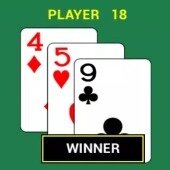
Were you aware that the house edge on video blackjack is much higher than the house edge in a traditional game with a live dealer?
Video poker is far and away better than slot machines. The payback percentage on video poker games is usually at least 95%, which means the house edge is (at most) 5%.
On slot machines, you’re lucky to find a game with a payback percentage as good.
You might think that video blackjack is comparable to video poker and a great game. It’s not the case at all.
In fact, all the video blackjack games I’ve ever come across paid even money for a natural. That’s worse than a 6/5 payout. That change alone adds 2.3% to the house edge.
In most casinos, though, video blackjack has a random number generator that emulates the same probabilities as a deck of cards.
One advantage of video blackjack does offer its availability in a low-stakes version. You can find video blackjack games where you can play for 25 cents per hand.
But the much higher house edge and the increased rate of play add up to make video blackjack an expensive game to play. You might see 60 hands per hour at a traditional blackjack table, but you can easily play 200 or 300 hands (or more) per hour when you’re playing video blackjack.
If you’re determined to play video blackjack online, consider playing at one of the best live dealer casinos.
The blackjack games at all the online casinos I’ve ever played offered full payouts on naturals.
You Can Still Win Despite the House Edge
What’s important to highlight here is that you can still win at this game. Despite the house advantage blackjack games come with.
But in the short run. Now, this can’t be emphasized enough. In the short run, in any gambling game, anything can happen. This is called variance. A more colloquial way of describing this mathematical phenomenon is to use the word “luck.”
Think about it this way. If your mathematical expectation is to lose 1% of every bet, you’d almost have to place at least 100 bets before seeing your actual results mirror that expectation.
In 2 or 3 hands, it would be impossible to see an average 1% loss. So, here are the possibilities for three hands to illustrate this point.
- You could win all 3 hands. This represents a net win of at least 3 units.
- You could lose all 3 hands. This represents a net loss of at least 3 units.
- You could win 2 hands and lose 1 hand. This represents a net win of 2 units.
- You could lose 2 hands and win 1 hand. This represents a net win of 1 unit.
If you look at your average win/loss per hand in those situations, you get:
- Winning 3 units on 3 units bet is a 100% win.
- Losing 3 units on 3 units bet is a 100% loss.
- Winning 2 units on 3 hands is a 66.67% win.
- Winning 1 unit on 3 hands is a 33.33% win.
None of those outcomes resembles the 1% that we expect mathematically over time.
Of course, those examples are simplified and don’t consider the possibility of winning 3 to 2 on a natural. But even if you consider that, it’s still impossible to see the mathematical expectation over a short period. In fact, if you only play for a couple of hours, you can often walk away with a winning session.
The casino is aware of this, in fact. If this weren’t possible, no one would ever play a casino game to begin with. The house might be running 10 blackjack tables 24 hours a day. If they have an average of 3 players at each table all the time, averaging 60 hands per hour, they’re looking at 43,200 hands per day.
With that few hands, casinos can even see losing days, although they’ll more often see winning days. But over the course of a month or a year, the real numbers are going to close in on the mathematical expectation.
You Can Still Lose in the Short Run
Even if you’re an advantage player with an edge over the house!
Some people think that because they can count cards and get an expected edge of 1% over the casino, they can just sit down and win whenever they want to. What I said in the last section applies just as much to advantage players. In the short term, anything can happen.
It’s only in the long run, over thousands of hands, can you expect to start seeing your results mirror the expectations.
The lower your edge, the bigger your bankroll needs to be. You should have between 200 and 1000 betting units.
On the lower end, your risk of going broke is higher. If you’re playing for $100 per hand and your total bankroll is $20,000, you have a 40% chance of going broke before your edge kicks in.
On the other hand, if you have a bankroll of $100,000, your probability of going broke is only 1%.
Look Online for Great Blackjack House Edges
The house edge for online blackjack games can be excellent if you know what you are looking for.
Online casinos don’t have to pay dealers. They don’t need air conditioning or cocktail waitresses. They often employ workers in countries with a different standard of living than the United States.
Those absences add up to make running an online casino cheaper than running a traditional brick-and-mortar casino in the United States.
Some can pass those savings along to the online casino player through better rules and a lower house edge.
Even if the house edge at an online casino is only 0.2% or 0.1%, you’ll go broke if you play long enough. And online casinos always maintain an advantage over the player.
The house edge for the various blackjack games from different software providers is easy to find online. But it’s important to trust the sites you’re playing on to tell you the right facts and figures.
Hence, you should only use the safest online casinos when hunting for the best blackjack house edge.
Only Video Poker Beats the Blackjack House Edge

The only game in the casino with a lower house edge than blackjack is video poker, and that’s only on certain game variations with certain pay tables.
You can find video poker games with a payback percentage of 99.95% or 99.54%. That means the house edge on those games is 0.05% or 0.46%. This is better than what you’ll find at most blackjack games.
If you like video poker, by all means, you should take advantage of those games. Some people don’t enjoy the interaction at casino table games. If that’s you, feel free to stick with the machines. But always look for the titles with the lowest house edges.
One drawback to video poker is that it’s inevitably played for low stakes. All my friends are low rollers, so it doesn’t affect us much. But if you want to put $500 into action at a time, you just can’t do it at a video poker game.
You can even get an edge at video poker if you choose the right games and take strategic advantage of comp points from the casino’s slots club. But the stakes are so low that it’s impossible to win much per hour doing so.
If you’re considering swapping blackjack for video poker, the following guide explains all you need to know!
Making the House Edge in Blackjack Work for You
The blackjack house edge is there for a reason. That is to ensure that the house always wins.
That doesn’t mean that the house edge in blackjack games online or in your favorite brick-and-mortar establishments will always deprive you of wins.
In the short term, you could certainly make a profit by playing this game. Over the long term, your returns will diminish even faster if you are not paying attention.
Other than blackjack strategy, where you play is as important as how you play. Given that the online blackjack house edge can be favorable compared to what you get at land-based casinos, it’s always worth hunting out the top titles.
Luckily enough, there are some exceptional online casino sites we trust to deliver in this department. You can check them out for yourself below!
Footnotes:
- Blackjack popularity is courtesy of European Business Review.
- Snopes provided the story of why the ⅓ burger flopped.

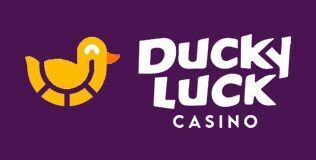



One thing you did not mention is the play of novice players at your table. They can ruin it for everyone. If I detect a novice player at my table, I get up and go elsewhere. Rita
Man that was an awesome read . And now that I’ve read this I understand a lot more of what’s truly going on . I’m an excellent basic strategy / bet/ knowing when to double and split . All my friends we picking on me cause I wouldn’t hit those strong hands . But they were two hundred dollars down in one five deck shoot . I played for two hours , walked away with 300 only starting with fifty .
I was glad to know that someone with all this knowledge chose basic strategy,, or excellent basic strategy as the technique of choice due to the house edge factors .
Thanks man ,, great article